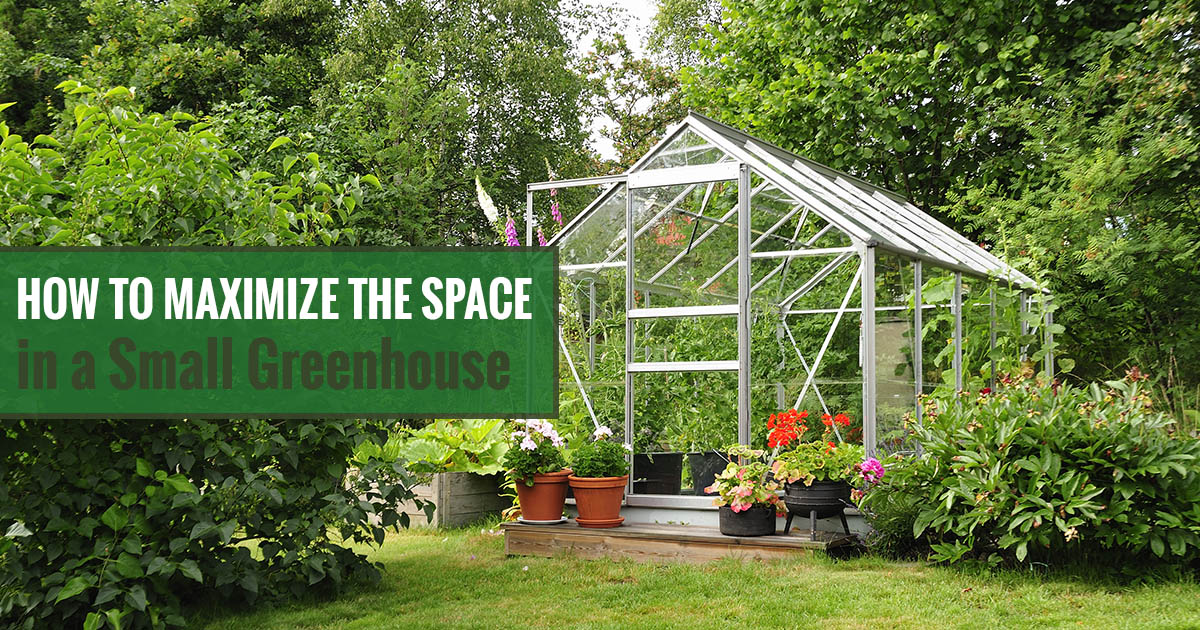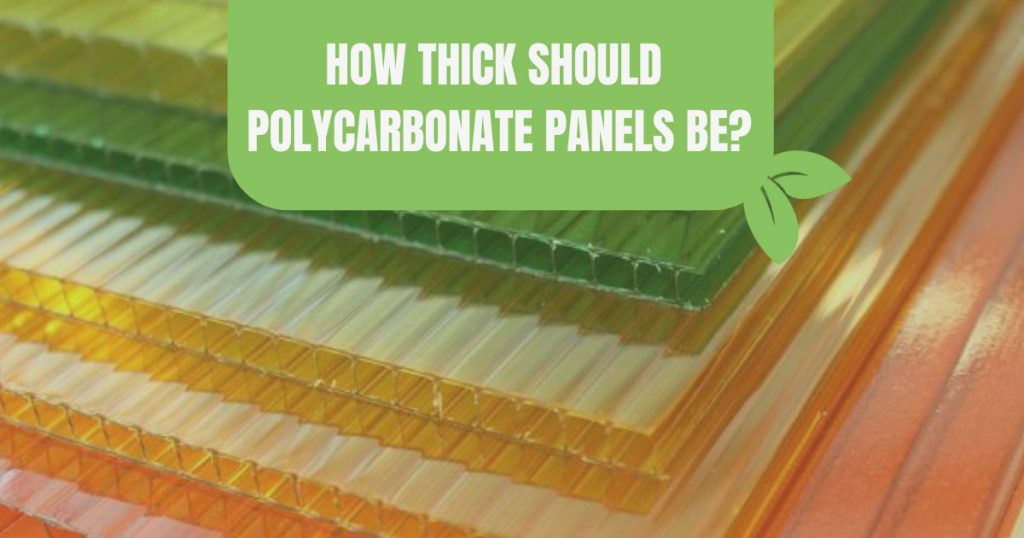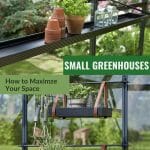
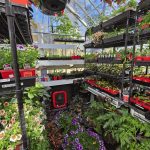
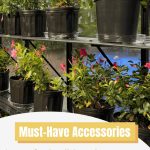

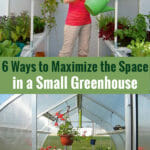
Whether you already have a small greenhouse in your backyard or you are thinking about purchasing one, these space-saving tips will help you to maximize your space in a small greenhouse. Most people, who live in urban areas don’t have a lot of room and want to make the most out of their backyard. Other people just don’t have enough money to invest in a large greenhouse or just start with greenhouse gardening as a hobby. Although we always recommend getting one size larger than you think, we understand that there are circumstances that make it impossible. Therefore, we want to give you ideas on how to make the most of your small greenhouse.
What is a small greenhouse?
We consider anything up to 65 square feet as small. If you haven’t purchased your greenhouse yet, we have a great collection for you to browse here.
6 Space-saving tips to maximize greenhouse space
1. Surface area
Calculate the entire surface area available in your greenhouse to see if you are making good use of the space open to you. With small greenhouse kits, in particular, every little bit of space counts. Therefore, you should ensure that you maximize the total surface area in your greenhouse.
One way to do this is to use rolling benches or to get a small greenhouse kit such as the Solexx 8ft x 8ft Garden Master or the onion-shaped Riga 2s that have pre-built-in shelving. These kits generally maximize the growing space quite efficiently.
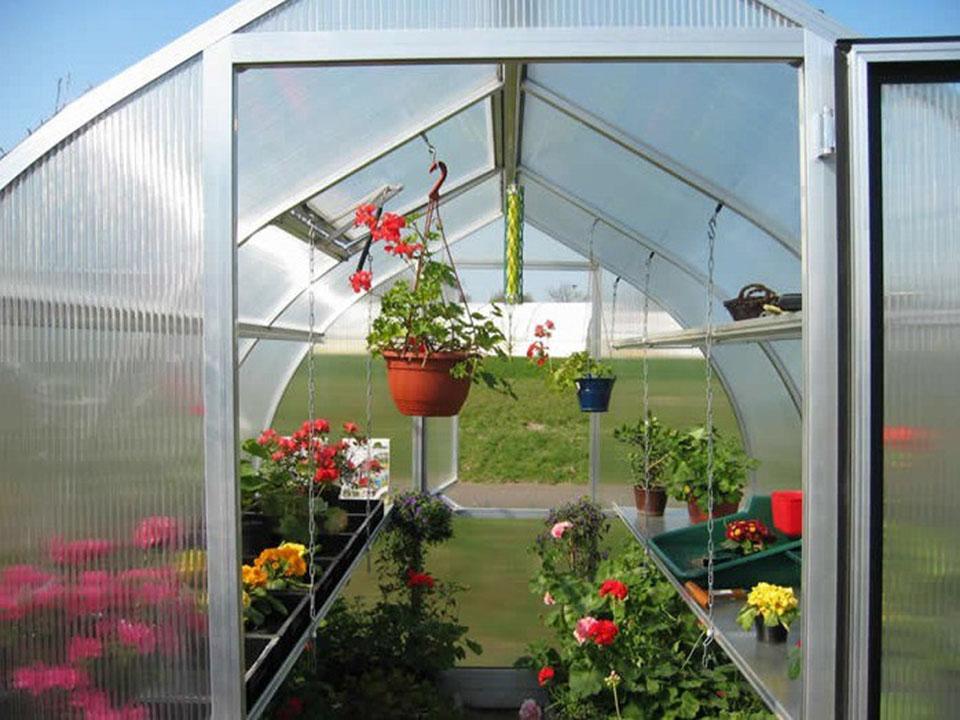
2. Crop schedules & planning
Where possible, try to use your greenhouse at near-full capacity. Think about what season you are in and start growing plants that can withstand colder temperatures early. Make a plan of the plants that you want to grow. Then schedule everything from sowing to harvesting so that you can use the greenhouse space to the full potential. Some plants take shorter times to be ready for harvesting, for example, spinach and radishes. Once you harvested those, you can use the spot for growing something else or the same, it’s up to you, of course.
You can also schedule your crops to transplant them into your garden.
3. Transplanting plants
Depending on the time of year you can start your plants inside your small greenhouse and transplant them into your garden. This not only saves space inside your greenhouse but also gives you a great head start into the outside growing season.
Transplants can be more immune to insect and other pests because they are more developed and bigger when you first put them into your garden. There is no hassle with birds picking your seeds in your garden beds outside.
Great examples of vegetables that can be transplanted after growing them in seed trays:
- Celery
- Eggplant
- Collards
- Kale
- Broccoli
- Kohlrabi
- Leeks
- Onion
- Peppers
- Scallions
- Tomato
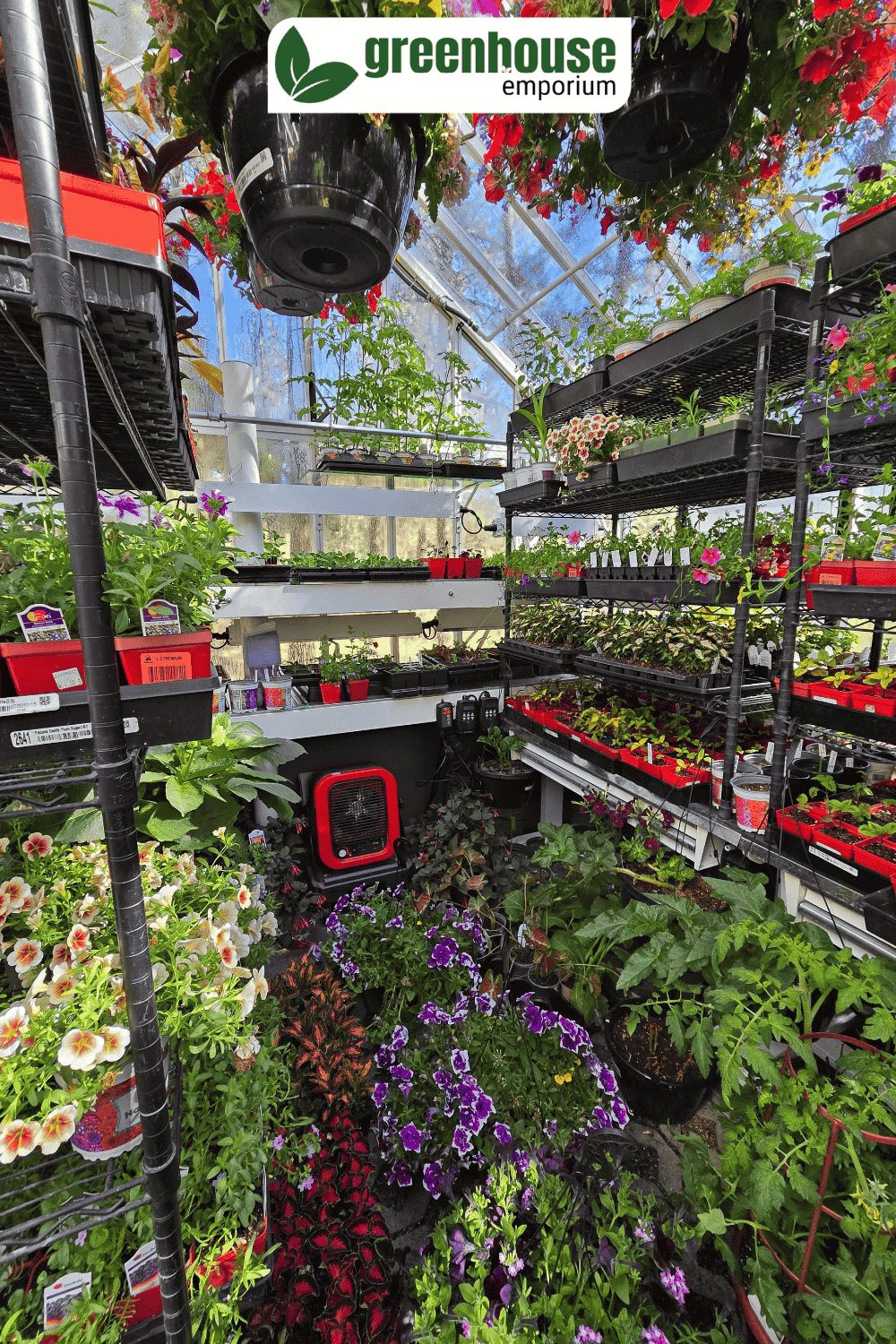
4. Greenhouse layering & staging
Can crops be layered? At times, adding a second crop under your first planting will work brilliantly until the plants germinate. For example, using cress on top of crops that take longer to germinate.
Greenhouse staging is very popular with gardeners. It gives plenty of surface area for your seedlings and plants. It maximizes the vertical growing space, too. By staging your crops, you create more shaded areas below the benches. This can be beneficial for those species that grow perfectly under low light conditions. Kale and other leafy vegetables just work fine in shady spaces (find more vegetables for shady places here).
However, other plants need more sunlight so you have to plan your crops and divide your greenhouse into zones.
5. Zoning
Dividing your greenhouse into zones will help you to utilize the space most efficiently. As mentioned above you can use shades for zoning. You can also consider setting your crops depending on how much heat they need. Plant the crops that only grow in warm temperatures close to the heat sources. Then, put your cold-tolerant crops a bit separated from the heat. This way you have the optimal conditions for growing your crops faster and more efficiently.
Zoning your greenhouse is not just for growing efficiency, but also for the organization. Visualize benches and shelves. Planning different regions for your plants will reduce the clutter and will keep pests away from the garden. Keep things you usually use in one place, and you won’t waste valuable time seeking for them. Planning zoned spaces in your garden is an excellent idea to assure you’re getting the most out of the place you have.
6. Hooks, hanging pots & other greenhouse accessories to maximize the space in a small greenhouse
Vertical gardening helps to utilize small spaces to their maximum. Use hooks, spirals, top shelves or hanging pots from the roof or sidewalls. You can either use it for growing, for drying herbs, or for storing gardening tools. Be inventive. Clip together gardening gloves or seed packets and hang them on the walls with a hook. Hanging pots add an interesting design to your greenhouse if placed in higher areas. For the ease of use, you can use the Plant Caddie Hook. You can easily lower your pots with it to make taking care of your plants simpler.
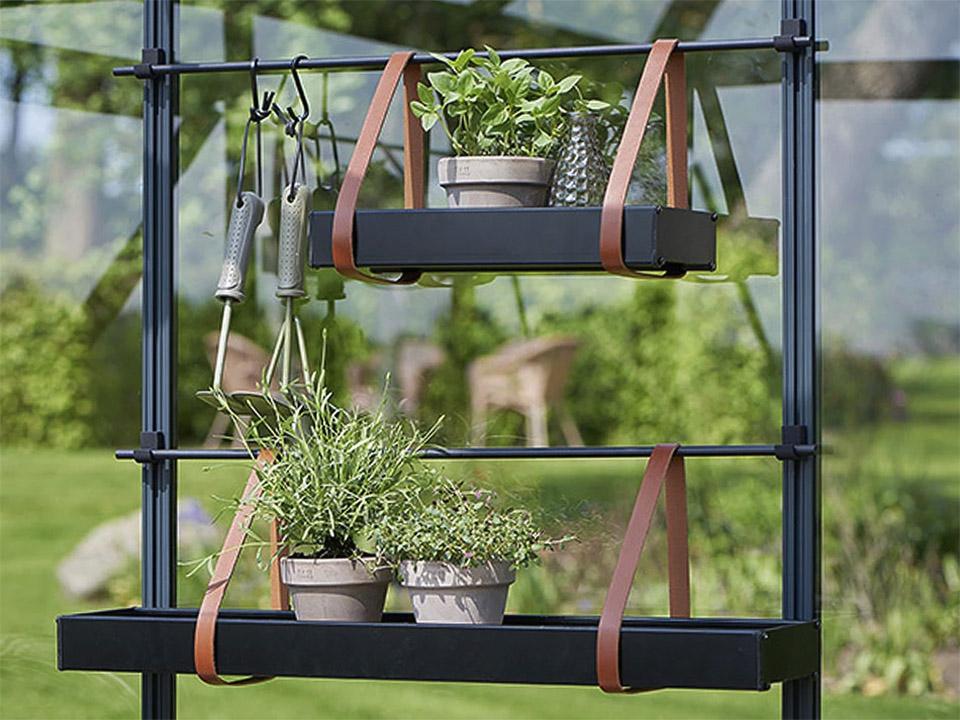
Placing more shelves on the side walls increases the vertical growing space drastically. In addition, it looks pretty and you can even store gardening tools on the hooks.
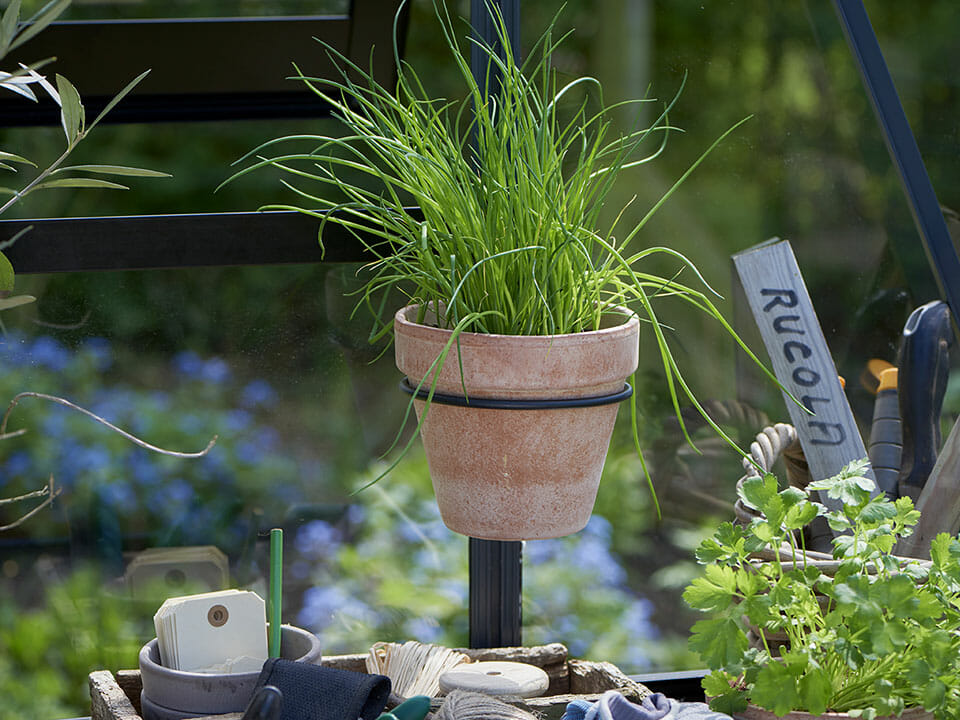
Installing pot holders or hooks in the frame profiles is another great option to improve the space in a small greenhouse.
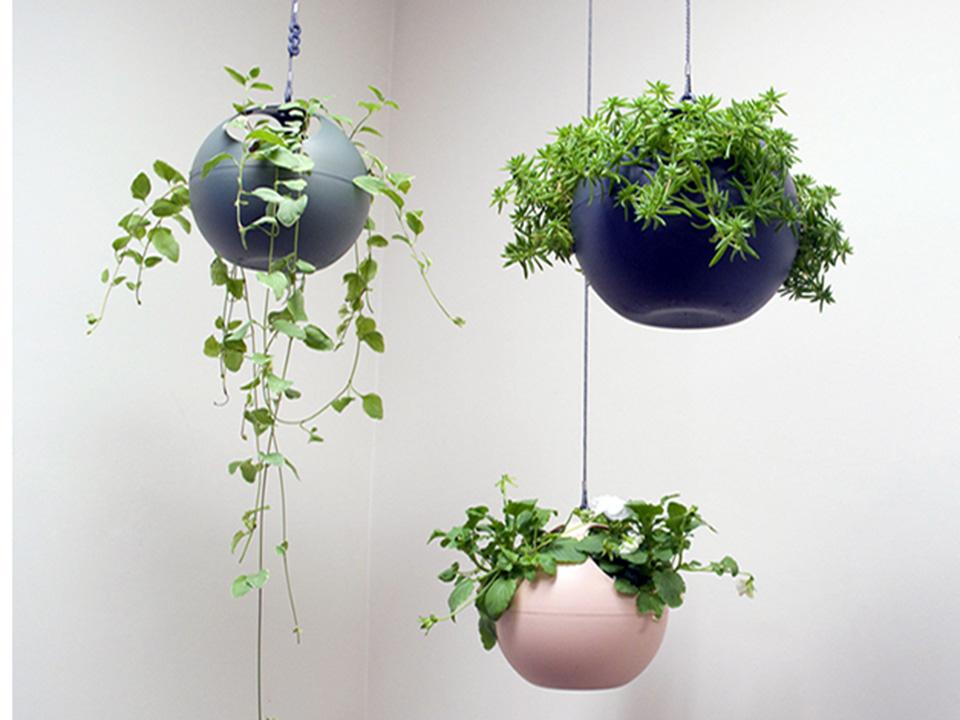
Hanging pots can be a wonderful addition to your greenhouse as well! You can place them as high you need them so that you still have enough headroom to walk through your greenhouse conveniently.
By strategically planning your small greenhouse, you can efficiently maximize the space in your tiny house. Use the tips and tricks provided above to get the most out of your small greenhouse.

